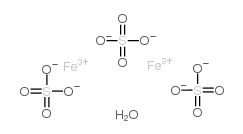| 结构式 | 名称/CAS号 | 全部文献 |
|---|---|---|
 |
聚二甲基二烯丙基氯化铵
CAS:26062-79-3 |
|
 |
硫酸铁(Ⅱ)铵分析滴定液
CAS:15244-10-7 |